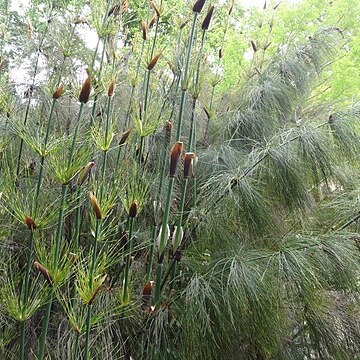Herbs perennial, mostly dioecious, rarely monoecious or hermaphroditic. Rhizomes usually covered with imbricate scales; scales glabrous or with various types of unicellular or multicellular hairs. Stem erect, simple or branched, terete, quadrangular, or compressed; nodes solid; internodes solid or hollow. Leaves alternate, mostly scattered along stem, usually reduced to an open leaf sheath with a rudimentary blade; leaf sheath closely appressed to stem or inflated; ligule usually obscure or absent, apex sometimes elongate. Male and female inflorescences sometimes dissimilar, of (1-to) many-flowered spikelets or much branched and occasionally with leafy bracts; bracteoles chaffy. Flowers mostly unisexual, small; male flowers sometimes with a pistillode; female flowers sometimes with staminodes. Perianth usually in 2 whorls, seldom reduced or absent; segments scalelike. Stamens (1--)3(or 4), inserted opposite inner perianth segments; filaments free or rarely connate; anthers 1(or 2)-loculed, introrse or seldom latrorse, dehiscing by longitudinal slits; pollen grains 2-or 3-nucleate, 1-porate. Ovary 1--3-loculed; ovule 1 per locule, pendulous, orthotropous. Styles 1--3, free or basally connate; stigma elongate, often plumose. Fruit a nut or loculicidal capsule, usually small. Endosperm copious, mealy; embryo biconvex, small.
Evergreen rush-like plants, usually dioecious; stems (culms) erect, simple or branched, photosynthetic. Leaves generally reduced to sheaths which are split to their base, usually with a small awn or mucro. Inflorescence sexually differentiated or the sexes similar, terminal, spicate or paniculate, much or little branched. Flowers nearly always aggregated into spikelets, these surrounded at base by a spathaceous sheath, each flower in the axil of a bract, sessile or pedicellate. Flowers small, wind-pollinated, regular; perianth of 2 whorls of 3 segments each, the segments similar or differentiated. Male flowers with three 1-celled dorsifix anthers, introrse with a longitudinal slit, and usually with vestigial female parts. Female flowers with the ovary superior, with 1–3 uniovular locules and 1–3 styles; staminodes 3 or absent. Fruit small, a 1–3-locular capsule or a 1-locular nut. Seeds 1–3, with copious endosperm; embryo small

